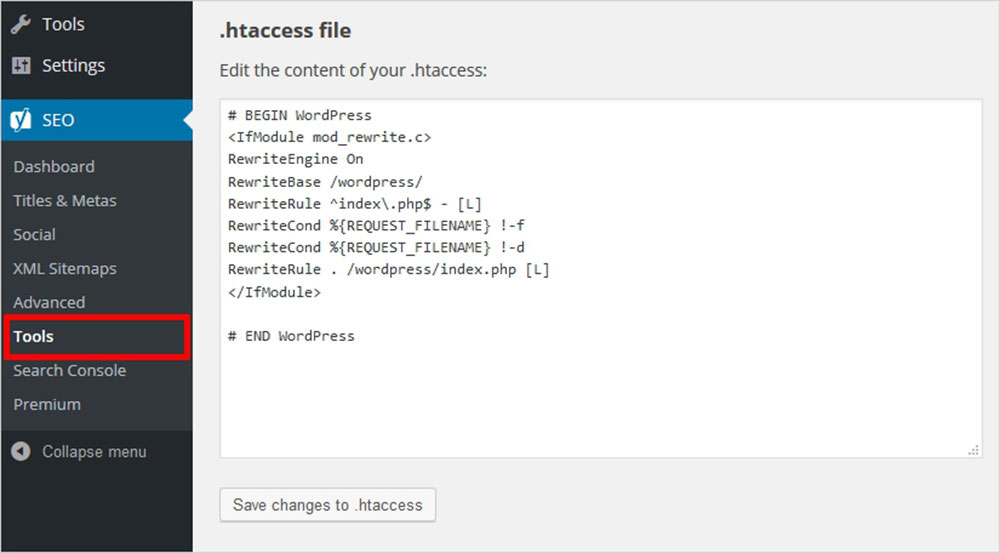
A proxy server is a computer network which routes requests to a website, and then returns the response. Every internet device has an IP Address, which uniquely identifies it in a network. Computers can't communicate with each other without the IP address. Additional information about a user can be found in the IP address.
Proxy Servers are a type or web firewall.
Proxy servers can be used to redirect traffic and protect an organization’s network. It can either block access to the company's network from outsiders or make requests to an external network. A proxy server is an effective tool to protect a network from hackers and virus attacks. These systems can also filter content for organizations.
These systems are more complex than those that use packet filtering, and require more computing resource. They provide greater security and can be controlled in detail over how applications are accessed.

They can store content
Proxy servers cache content in a variety ways. One reason for proxy servers is to speed up websites. Proxy servers offer many benefits, not just the ones mentioned. Good proxy servers will cache objects having a longer TTL than normal, and during peak periods. The cached object can also be served to multiple users without the need to re-download it from the original source.
The data stored in a proxy server's cache is accessed by clients when they request a page. This cached data can be accessed by clients much quicker than a request for the destination server. The proxy server also uses less bandwidth because the data is stored locally.
They can translate web content into the client's local language
It is possible to localize your website using a proxy server that can translate web content into the client's language. These servers connect to the client's source website and route traffic to their destination. The content is translated in real time, either by human or machine translation, and stored in translation memory. When the translated content is received by the second web host, it reconstructs the site structure in the original language.
A website translation proxy can make it much easier to translate a website. It can be used to reduce the cost of hiring a localization specialist. This allows translators and editors to focus more on the content than the site's layout. It also prevents bottlenecks and puts linguists in control of the process. Furthermore, a proxy is not dependent on a multilingual CMS. This reduces development costs.

They can boost network performance
Proxy servers can increase network performance by caching URLs and web pages. Caching reduces the time taken to retrieve a site from an original server and saves bandwidth. It speeds up web browsing and reduces the need to transfer data from one server.
As the number of users on the internet and websites increases, so does the traffic volume on networks. In some cases, this means huge overload on proxy servers. This overload can cause packet loss and slow down internet speeds. Using a proxy helps reduce the impact of this overload.
FAQ
What is a responsive design web design?
Responsive Web Design is a method of designing responsive websites. It allows content to display on all devices (desktop computers, tablets and smartphones), so that it can be viewed easily on any device. This allows users access all features of a website, including navigation menus, buttons and buttons, on one device. RWD aims to ensure that every user who views a site is able to view it on any screen size.
You would, for example, want to make sure that a customer can view your website even on a mobile device.
Responsive websites will adjust their layout according to the device that is being used. The site will display exactly the same way on a laptop as if it were viewed on a desktop computer. However, if you're viewing the page on your phone, it will display differently.
This means that you can create a single website that looks great on every type of device.
How Much Does It Cost To Create An Ecommerce Website?
It all depends on what platform you have and whether or not you hire a freelancer. The average eCommerce site starts at $1,000.
Once you've chosen a platform you can expect to pay $500-$10,000.
The average cost of a template will not exceed $5,000. This includes any customizations that you might need to suit your brand.
How much does it cost to build a website?
The answer depends on what you are trying to achieve with your website. Google Sites is a free service that may be available if you only want to publish information about yourself and your business.
But if your goal is to attract visitors to a website, it's likely that you'll need to invest in something more robust.
The most common solution is to use Content Management Systems (like WordPress). These programs make it easy to create websites without any programming knowledge. The sites are hosted by third-party businesses, so there is no risk of your site being hacked.
Another way to build a website is to use a service called Squarespace. Squarespace offers a variety plans that range from $5 per person to $100 per person, depending on what information you want to include.
What is a static site?
You can host a static website anywhere you like Amazon S3, Google Cloud Storage and Windows Azure Blob storage. Rackspace Cloud Files, Rackspace Cloud Files. Dreamhost, Media Temple. You can also deploy a static website to any platform that supports PHP such as WordPress, Drupal Joomla! Magento PrestaShop and others.
Static websites are typically easier to maintain, as they don’t have to constantly send requests between servers. A static web page loads faster as there is no need to forward requests back and forth among servers. Smaller companies with limited resources and the time required to manage websites properly will find static web pages more beneficial.
Can I use HTML & CCS to build my website?
Yes! If you've been following along so far, you should now understand how to start creating a website.
After you have learned how to structure a website, you will need to know HTML and CSS.
HTML stands to represent HyperText Markup Language. It's like creating a recipe for a dish. It would include ingredients, instructions, as well as directions. HTML is a way to tell a computer which parts are bold, underlined, italicized or linked to other parts of the document. It is the language used to describe documents.
CSS stands as Cascading Stylesheets. It's like a stylesheet for recipes. Instead of listing each ingredient and instructing, you can write down general guidelines for font sizes, colors and spacing.
HTML tells your browser how to create a web page. CSS tells you how.
Don't be afraid to ask questions if you don’t understand any of these terms. Follow the tutorials below, and you'll soon be making beautiful websites.
Statistics
- It's estimated that chatbots could reduce this by 30%. Gone are the days when chatbots were mere gimmicks – now, they're becoming ever more essential to customer-facing services. (websitebuilderexpert.com)
- It's estimated that in 2022, over 2.14 billion people will purchase goods and services online. (wix.com)
- The average website user will read about 20% of the text on any given page, so it's crucial to entice them with an appropriate vibe. (websitebuilderexpert.com)
- Studies show that 77% of satisfied customers will recommend your business or service to a friend after having a positive experience. (wix.com)
- It enables you to sell your music directly on your website and keep 100% of the profits. (wix.com)
External Links
How To
How do I get started as a UI Designer?
Two ways to be a UI designer are available:
-
You can get a degree from school in UI Design.
-
You can become a freelancer.
To be able to enter school, it is necessary to attend college/university and complete four years. This includes business, psychology and computer science.
You can also take classes at community colleges or state universities. Some schools offer no tuition, while some charge tuition.
You'll need to find work once you have graduated. You must establish a client base if you want to work for yourself. It's important to network with other professionals, so they know you exist.
Also, you can look for internship opportunities at companies that are specialized in developing web apps. Many companies hire interns before they hire full-time staff.
A portfolio will help you get more work once you have established it. Your work samples and details about the projects should be included in your portfolio.
It is a smart idea to send potential employers your portfolio via email.
Market yourself as a freelancer. You can list your services on job boards such Assure, Guru, Freelance, Guru and Upwork.
Freelancers frequently receive assignments from recruiters who post jobs online. These recruiters are looking for qualified candidates to fill certain positions in specific industries.
These recruiters usually provide a briefing outlining the requirements of the job to the candidate.
A freelancer is not required to sign a long-term contract. It is best to negotiate an upfront fee if you intend to move forward.
Many designers prefer working directly with clients, rather than through agencies. Although this might seem like a great idea, many people lack the necessary skills.
Agency workers are often well-versed in the industry they work in. They can also access specialized training and resources that will allow them to produce top-quality work.
In addition to these benefits, agency workers usually receive a higher hourly rate.
One downside to working through an agency is the inability to have direct contact at work with the employer.
A UI designer must be self-motivated, creative and flexible.
Excellent communication skills are also required.
UI designers create user interfaces and visual elements for websites.
They are also responsible for ensuring that the site meets the needs of its users.
This means understanding the needs of visitors and how the site should work.
Wireframes can also be created by UI developers using a variety o tools. Before they begin designing, wireframing allows them to visualize the page's layout.
Wireframe templates are available online, making it easy for anyone to create their own wireframes.
Some designers only focus on UI design. Others combine UI and graphic design.
Photoshop is a popular software used by graphic designers for editing images.
They then use Adobe InDesign to lay out pages and layouts.
Photographers capture images using digital cameras or DSLRs.
They then upload the pictures to a photo editing program where they add text captions, filters, and other effects.
After taking the photo, the photographer saves it in a file format that is compatible with the website.
It is important that you consider all aspects of web design when creating a website.
This includes research as well planning, wireframing. prototyping. testing. coding. content creation. and publishing.
Research - It is crucial to conduct extensive research before beginning a new venture.
Planning - After you have completed your research, it's time to start creating a plan.
Wireframing- A wireframe - A wireframe represents a sketch of an application or web page.
Prototyping: Prototypes can help to ensure that the final product meets the initial vision.
Testing - To ensure that the prototype works correctly, it should be subject to multiple rounds of testing.
Coding: Coding is the process of writing code for computers.
Content Creation: Content creation can include everything from copywriting to managing social media profiles.
Publishing involves uploading files to a server, and making sure the site is accessible.
You will be required to study about other projects in order to work as a freelance UX/UI design.
Some companies require only wire frames, others require complete prototypes.
Depending on the type of project you accept, you may be asked to complete specific tasks.
You might, for example, be asked to create multiple wireframes if you're being hired to do wireframe design.
If you're required to build a complete prototype of a website, you may also be required to design a fully functional version.
No matter what type of project you are working on, it is important to have good interpersonal skills.
Since most clients hire freelancers based on referrals, you must build solid relationships with potential employers.
A communication skill is essential, both verbally or in writing.
A portfolio is an important tool in any freelancer's arsenal.
It showcases your work and demonstrates your ability to deliver high-quality results.
This is possible by creating an online portfolio.
The best way to get started is to find websites similar to yours.
Then, search these sites to see how each one presents its services.
Once you've identified the best practices, it is time to start implementing them.
It's also beneficial to include links within your resume to your portfolio.